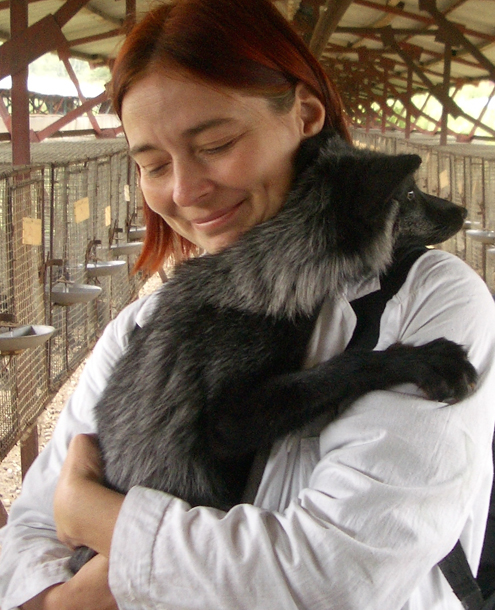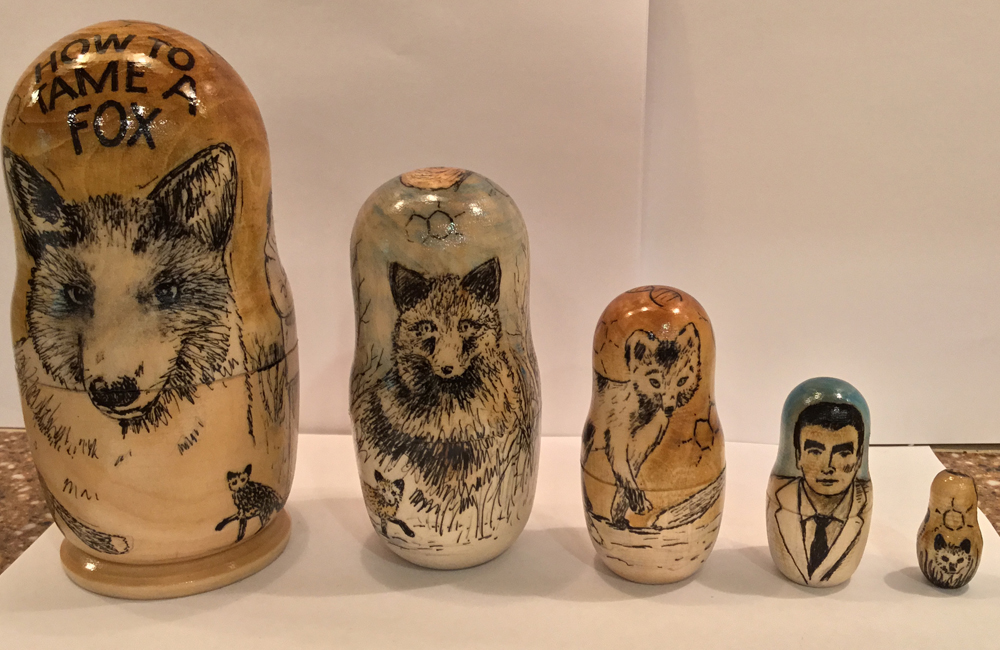The Genes Behind Domestication
By Lee Alan Dugatkin
Nearing its 60th year, the silver fox domestication experiment continues to make new discoveries.
November 20, 2018
The Long View Biology Evolution Psychology Animal Behavior
Fifty-nine years is an extraordinary amount of time for an experiment to run. It’s a good reason to update an article that I co-authored with biologist Lyudmila Trut of the Russian Academy of Sciences in the July–August 2017 issue. In that article we outlined an experiment in Siberia that began in 1959, which continues to this day. That experiment, led by Trut since its inception, explores to what extent silver foxes (Vulpes vulpes) can be domesticated, as dogs have been. (The original article itself was adapted from my recent book with Trut, How to Tame a Fox and Build a Dog. Trut also wrote an American Scientist feature in March–April 1999.)
In a nutshell, for the past 59 years, Trut and her colleagues have been methodically selecting the tamest foxes, generation after generation after generation (foxes breed once a year, so I’m tempted to string together 59 “generation after generation”s, but I will spare you, or at least my editor will). The result is not only foxes that are by nature (not via training) calmer than the calmest lapdog, but which look almost eerily doglike, with many showing floppy ears, curly tails, and a rounded doggish snout.
In a recent paper in Nature: Ecology and Evolution, biologist Anna Kukekova of the University of Illinois at Urbana, Trut, and their international team of colleagues continue to probe the silver fox genome for clues about the process of domestication. What they discovered was a hotspot for changes associated with domestication on fox chromosome 15. One gene there, SorCS, is known to be linked with synaptic plasticity—the ability of neuron synapses to alter the strength of their connections based on increases or decreases in activity—which itself is associated with memory and learning. Other previous behavioral work, led by evolutionary anthropologist Brian Hare now of Duke University, found that domesticated foxes are especially adept at solving problems that require social cognition (Hear a podcast and see a slideshow about Hare’s dog cognition research). Taken together, these studies are helping us better understand how the process of domestication has led to important changes in cognitive abilities.

Image courtesy of Lee Dugatkin
Right from the start, Dmitri Belyaev—the geneticist who directed the Institute of Cytology and Genetics of the U.S.S.R. Academy of Sciences from 1959 to 1985, who was also Trut’s mentor and initiator of the fox domestication experiment—had hypothesized that the process of domestication was in part the result of changes in gene expression patterns. In a recent paper in The Proceedings of the National Academy of Sciences of the U.S.A. (PNAS), Kukekova, Trut, and the research team of geneticist Andrew Clark at Cornell University followed up on earlier work on gene expression in domesticated foxes by examining expression patterns at the genome level (meaning that they looked at the whole organism, instead of any one type of cell), in both domesticated foxes and in a second line of foxes that has been under long-term selection for aggressive, rather than tame, behavior. They found almost 150 genes in the prefrontal cortex of the brain that showed different gene expression patterns between domesticated and aggressive foxes. Some of the genes that showed differences in expression patterns are associated with serotonin receptor pathways that likely modulate behavioral temperament, including tameness and aggressiveness.
In addition to differences in gene expression—which measures when genes “turn on” and “turn off” and how much protein product they produce—this study also uncovered differences in how common certain gene variants called alleles were in the domesticated and aggressive foxes. Researchers found differences in allele frequencies at 176 genes, including genes associated with neural crest functioning.
Neural crest cells are a type of totiponent cell, which can give rise to any other type of cell. So what makes the finding so intriguing is that these cells are hypothesized to be key players in what is known as the domestication syndrome, wherein domesticated animals tend not only to be behaviorally calm, but also share a suite of morphological and anatomical features such as floppy ears, curly tails, smaller skulls, juvenilized facial and body structure, mottled fur patterns, and more. In a 2014 Genetics paper, evolutionary biologists Adam S. Wilkins, Richard W. Wrangham, and W. Tecumseh Fitch suggested that changes to the number of neural crest cells early in development explain much of the domestication syndrome. The argument goes as follows: Very early on in embryonic development in mammals, neural crest cells migrate to the brain, face, jaws, ears, tail, skin, and more. The team hypothesized that when our ancestors were selecting for calm, tame behavior early in the process of domestication, they were also indirectly selecting for a reduction in the number of migrating neural crest cells, and that, as a result, “most of the modified traits, both morphological and physiological [associated with the domestication syndrome], can be readily explained as direct consequences of such deficiencies [in neural crest cells]… .” The precise mechanisms operating here are not understood, but with the PNAS study showing differences in allele frequencies in genes associated with neural crest functioning, Wilkins, Wrangham and Fitch’s unifying hypothesis for the domestication syndrome gains more evidence.

For Lyudmila Trut's 85th birthday, her colleague and friend Lee Dugatkin had a fox-themed Russian matryoshka nesting doll custom-made by artist Steve Eilers.
Images courtesy of Lee Dugatkin
The fox domestication experiment continues to run strong, as does Lyudmila Trut, who is still at the helm. She turned 85 years old on November 6. Happy birthday—С Днем рожденья—Lyudmila! We wait, my friend, to see what else you and your team discover about these charismatic foxes.
American Scientist Comments and Discussion
To discuss our articles or comment on them, please share them and tag American Scientist on social media platforms. Here are links to our profiles on Twitter, Facebook, and LinkedIn.
If we re-share your post, we will moderate comments/discussion following our comments policy.